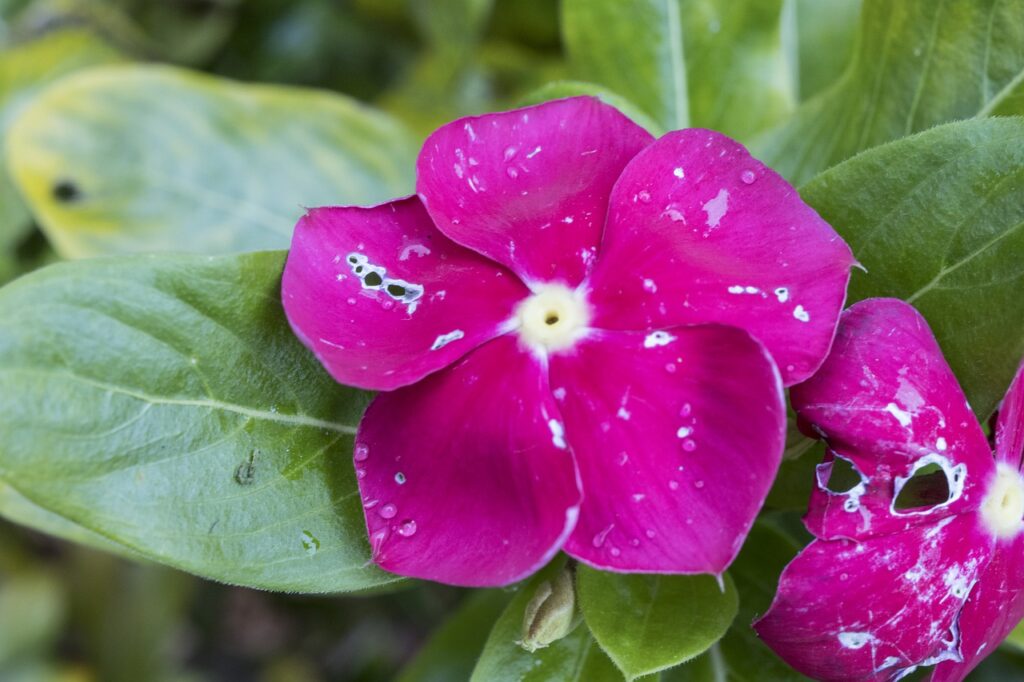Plant diseases are a hindrance to gardeners. They destroy the gardeners’ plants if you don’t deal with them in their early stages.
This article is a guide about common plant diseases and their control. Always make it a point to diagnose your plants once you notice funny ugly changes on their leaves, stems, and roots.
Below are the different common plant diseases and how to treat them in the best way possible.
1. Fasarium wilt.
A soil-borne fungus causes this plant disease. This fungus is most active in hot summer temperature areas and affects edible plants.
This fungus causes the leaves of the plants to wilt, roots of the plants to rot, and the plants usually experience stunted growth.
Remedy.
Uproot and destroy the infected plants.
Use disease-resistant cultivars.
Carry out crop rotation.
2. Damping Off disease.
This fungal disease mainly infects seedlings in wet, humid conditions. A soil-borne fungus that makes plants rot and decay causes The damping Off disease.
It mainly affects plants grown in greenhouses but also affects the plants outdoors.
Remedy.
Unfortunately, this disease has no special treatment, but good cultural practices reduce the chances of this disease thriving.
Don’t crowd the seedlings.
Ensure adequate ventilation of the plants.
Use disinfected new pots, cell packs, or trays.
3. Mosaic virus.
This virus destroys the leaves of the plants by making the leaves become mottled yellow, curled, and distorted.
Gardeners experience both the tomato mosaic virus and the tobacco mosaic virus. This virus usually infects tomatoes, cherries, apples, potatoes, and peppers.
It causes yellowing of leaves, reduced yields, malformed fruits, and stunted growth.
Remedy.
This virus can stay in dry soil for a long time. Therefore, there is no chemical treatment.
Do not plant susceptible plants in the same area for many years.
Uproot and destroy the infected plants.
4. Verticillium wilt.
It is a fungal disease that destroys hundreds of species of trees, shrubs, and edibles. The fungus stays in the soil for years, destroys the roots, and penetrates the vascular system, causing branches and foliage to turn yellow.
Remedy.
Sterilize the tools used for cutting using a bleach solution.
Carry out pruning of the plants.
Uproot and destroy infected crops.
Practice proper sanitation to get rid of these viruses.
5. Powdery mildew.
A fungus that leaves a telltale white dusty coating on leaves, stems, and flowers causes this disease.
The fungi infect plants like apples, cucumbers, roses, pears, and grapes.
Remedy.
Ensure good drainage and proper air circulation of the plants.
Spray fungicides on the infected plants.
Uproot and destroy the infected plants.
Do not water the plants at night.
6. Black spot.
It is a fungal disease that weakens the plants and makes them vulnerable to other problems.
This disease is dominant during the cold weather; small black spots appear on the foliage making the plants turn yellow, and eventually, the plant dries up.
Remedy.
Spray the infected plants using fungicides.
Practice mulching.
Cultivate black spot-resistant roses.
Water the plants at the roots strictly.
7. Downy mildew.
Fungal organisms cause this disease and make the leaves’ upper portion discolor as the bottom portion becomes white. It usually affects crops like broccoli and cauliflower.
Remedy.
Unfortunately, no fungicides are available for this particular disease, uprooting and destroying the affected crops.
Practice crop rotation.
Avoid crowding of the plants.
8. Canker.
It is simply an open wound infected by pathogens. The pathogens can either be fungal or bacterial.
This disease is common in woody landscape plants and displays symptoms like swollen, sunken dead areas on the tree trunks.
These cankers are very destructive because they girdle branches and kill the foliage.
Remedy.
Remove the affected debris and destroy them.
Put nutrients in the soil to improve its fertility before planting the crops.
Crop rotate the plants with disease-resistant crops.
9. Rust.
This disease causes rusty spots on leaves and stems. The rusty spots change from reddish-orange to black. A fungus also causes it.
Remedy.
Spray the infected plants using fungicides.
Collect and destroy the infected crops to prevent further destruction.
10. Blight.
This fungal disease spreads through windborne spores. The fungi make the spores cover a large area hence the rapid spread of the infection, and they mostly survive in warm, humid conditions.
Remedy.
Uproot and destroy any blight-infected plant parts.
Plant blight-resistant varieties like Sapro Axona and Sapro Mira.
11. Snow mold.
This disease thrives beneath the snow in moist conditions, and a fungus causes it. The fungus attacks turfgrass, and we see the symptoms after the snow disappears when the mold threads are formed on the grass.
Remedy.
Rake the matted grass to break up the mold.
Do not elongate the year’s cutting to discourage tall grass blades from falling over and contributing to matting.
12. Sooty mold.
This fungus grows on the sticky deposits called honeydew. Sooty mold impedes photosynthesis and stunts growth.
Remedy.
Spray the infected plants using insecticides like neem oil.
Destroy the plant-sucking insects such as aphids, leafhoppers, and mealybugs.
- Shot hole.
This disease destroys the plants by destroying the leaves. The leaves develop 6mm diameter numerous small spots. It mostly affects plants like peach, cherries, plum, and apricot.
Remedy.
Carry out pruning of the plants.
Plant shot hole plant resistant varieties.
Spray the plants using the copper spray.
14. Black knot.
It is a fungal disease that weakens plants and makes them susceptible to other problems. In cold weather, small black spots appear on the foliage that turns yellow and eventually drops off.
Remedy.
Carry out mulching, watering at the roots rather than wetting the foliage, plant varieties of roses resistant to blackspots.
Apply fungicides to prevent black spots
Summary
It is pretty saddening when your plants look horrible; most times, remedies help restore the plant’s health.
Simple remedies like watering the plant and exposing the plant to more sun can help, but in case they don’t, this could be a sign of a more significant problem.
Your gardening dream should not be killed by mere plant diseases with all the above information. I encourage all gardeners to use this article to fight the diseases affecting their plants.
Let’s all put effort together to fight these diseases. Catch your next time, stay safe and always remember to wear your mask.

